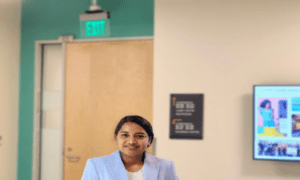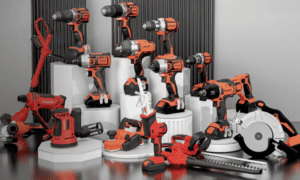President Donald Trump said Monday that Taiwan Semiconductor Manufacturing would invest $100 billion to support chip manufacturing in the United States.
TakeAway Points:
- Taiwan Semiconductor Manufacturing announced a $100 billion investment from President Donald Trump.
- The funds will be used to construct additional chip manufacturing facilities, increasing the company’s overall investment in the United States to $165 billion.
- Lenovo unveiled the Lenovo ThinkBook ‘flip’ concept, a laptop with a foldable screen. When fully unfolded, the screen is an 18-inch display.
TSMC invests in US
The president called the investment a “tremendous move by the most powerful company in the world.” The new capital brings TSMC’s total investment in the U.S. to $165 billion and will go toward building five new fabrication facilities in Arizona.
The announcement from TSMC, which supplies semiconductors to the likes of Nvidia and Apple for artificial intelligence use, supports the Trump administration’s ongoing efforts to make the U.S. an artificial intelligence hub.
Last month, Trump announced a multibillion-dollar AI infrastructure project with Oracle, OpenAI, and Softbank. He’s also made numerous calls to bring semiconductor production back to the U.S. after much of the manufacturing industry moved abroad. Advancing semiconductor production in the U.S. is a matter of economic and national security, Trump said Monday.
Trump has repeatedly called out and accused Taiwan of stealing the U.S. chip manufacturing business and touted tariffs on semiconductor imports. The company’s finance chief, Wendell Huang, said in January that he was confident the new White House administration would continue funding the company’s U.S. ambitions.
TSMC has already made strides to expand its footprint in the U.S prior to Monday’s announcement. The company committed $12 billion in 2020 to build its first U.S. chip factory in Arizona, later raising that investment to $65 billion with a third factory. It has also gained U.S. government support through a $6.6 billion subsidy from the U.S. Commerce Department.
A spokesperson for Nvidia said that the chipmaker “will fully utilize TSMC’s global manufacturing network to enhance our supply agility and resilience.”
Lenovo teases solar-powered and foldable screen laptops in latest concept
Lenovo on Monday showed off a laptop with a foldable screen and one that can get extra battery life from solar power.
These laptops are just concepts, meaning they are not commercially available. Lenovo, the world’s biggest PC maker, has a history of showing off imaginative concepts with some becoming reality, so it’s worth keeping an eye on what the Chinese technology giant is up to.
For example, Lenovo previously showed off the idea of a rollable laptop — one where the screen rolls upwards to increase the size of the display. The company will begin selling such a laptop this year.
The latest concepts were unveiled at the Mobile World Congress trade show in Barcelona.
Foldable laptop screen
The Lenovo ThinkBook ‘flip’ concept is a laptop with a foldable screen. When fully unfolded, the screen is an 18-inch display.
The screen can then be folded in half horizontally to create two screens—one on the front and one on the back.
The entire display can be folded down flat so the laptop turns into a tablet-like device.
Foldable displays are not new. Consumer electronics players like Samsung and Honor have launched smartphones with foldable displays. Huawei even sells a smartphone with a trifold screen.
But foldable screens of this size and on laptops are uncommon.
There’s plenty more work Lenovo will likely need to do before this can be commercialized including improving the durability of the display.
Solar-powered laptop
The Lenovo Yoga Solar PC is the company’s other concept device named after its line of Yoga laptops.
The product has solar panels on the back. These are able to absorb light.
While the PC still works with a traditional charger, the idea is that the solar power can give the user an extra bit of battery when the device is running low and there may not be access to a charging point.
Lenovo said that the solar panels can absorb even ambient light in a person’s surroundings to give a user an extra hour of laptop use at the end of an eight-hour work day.



































